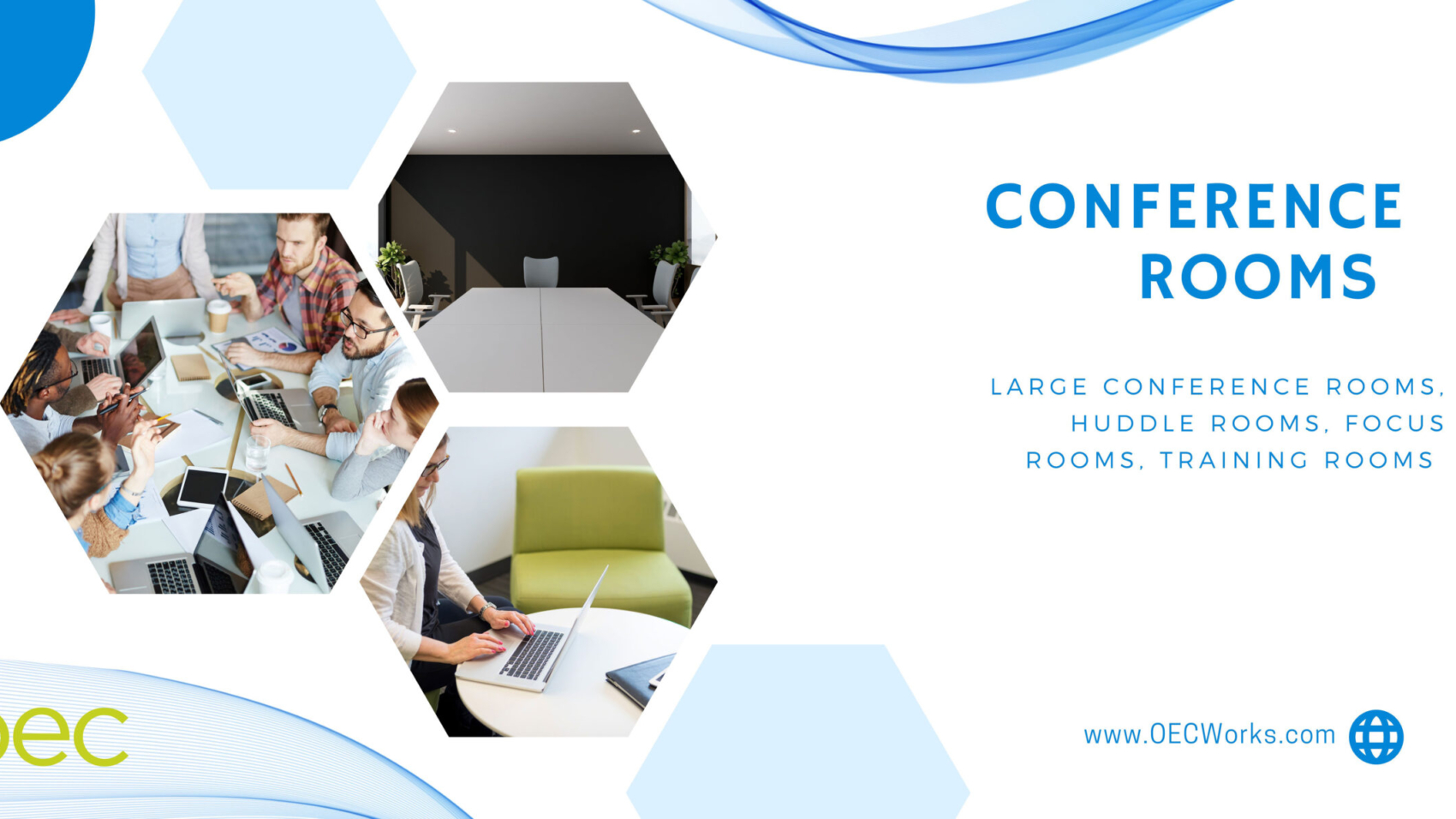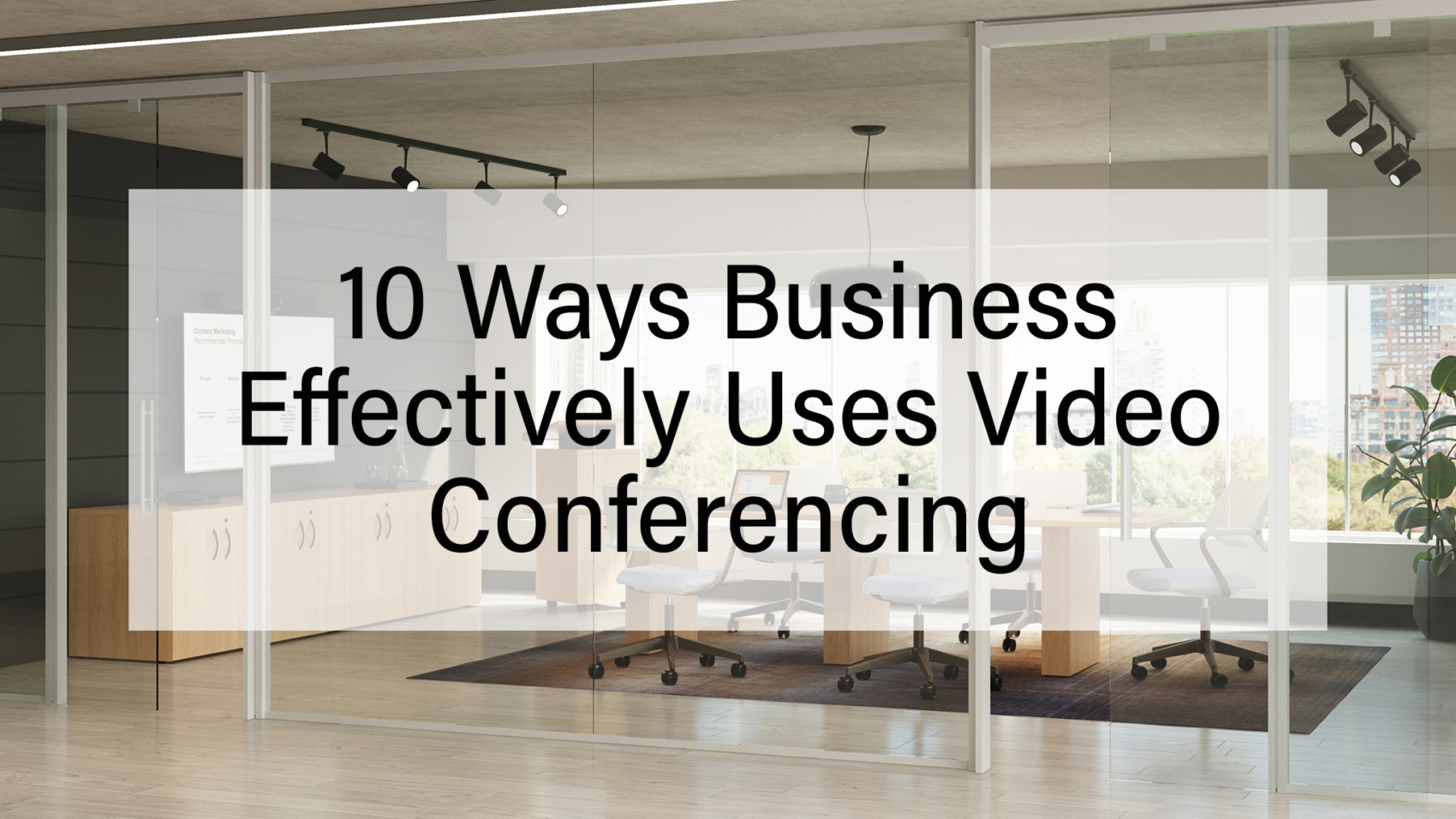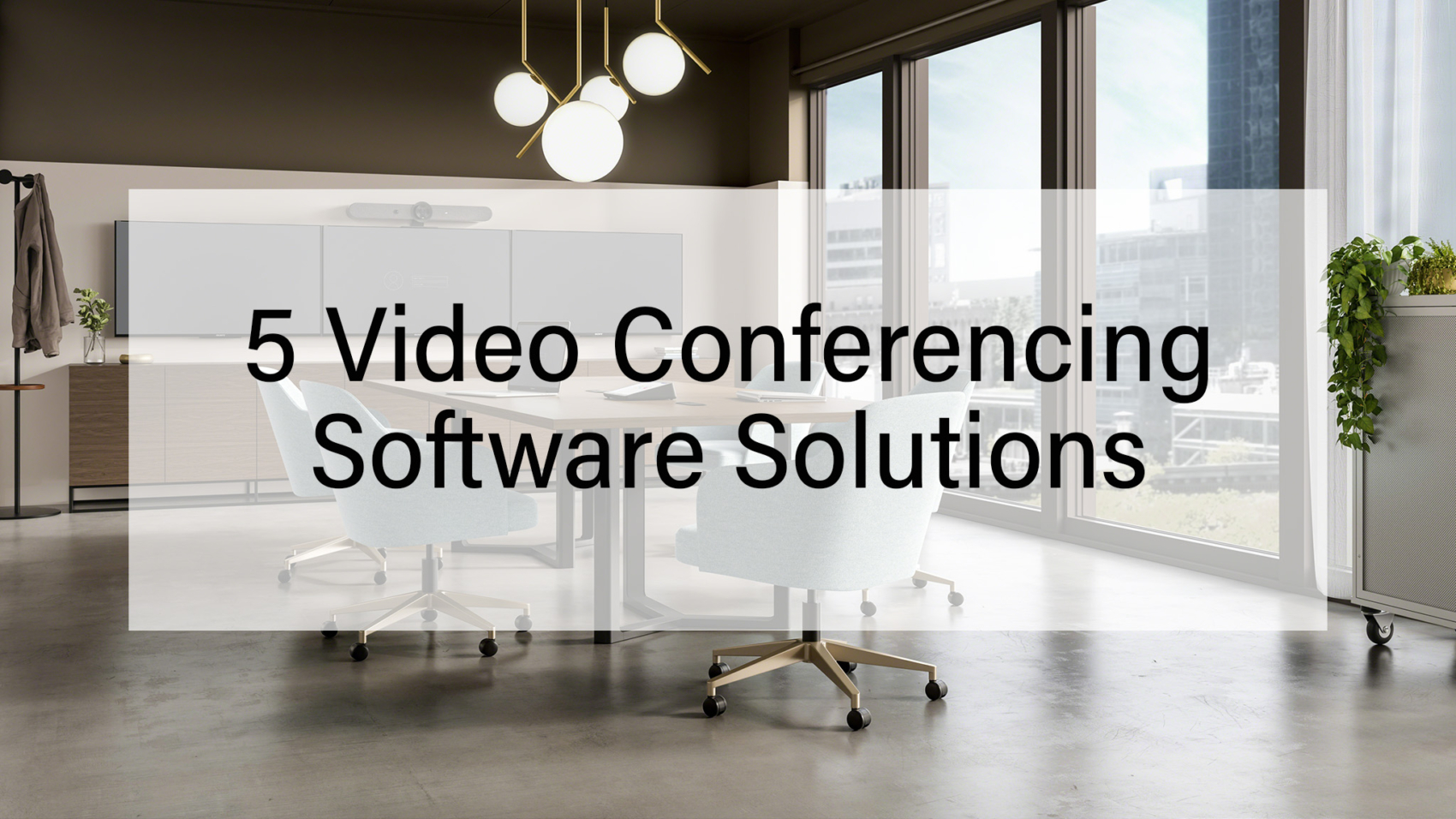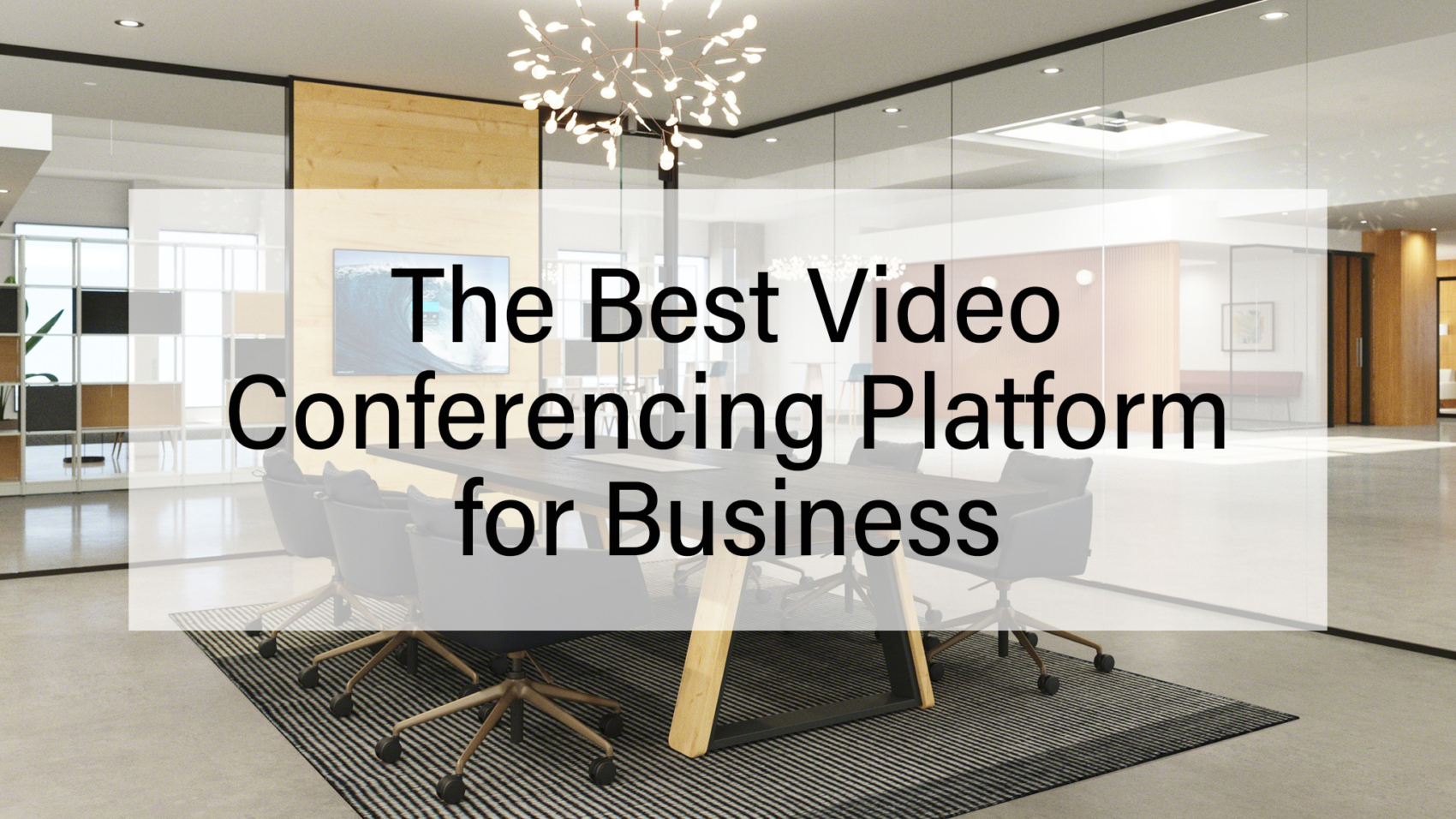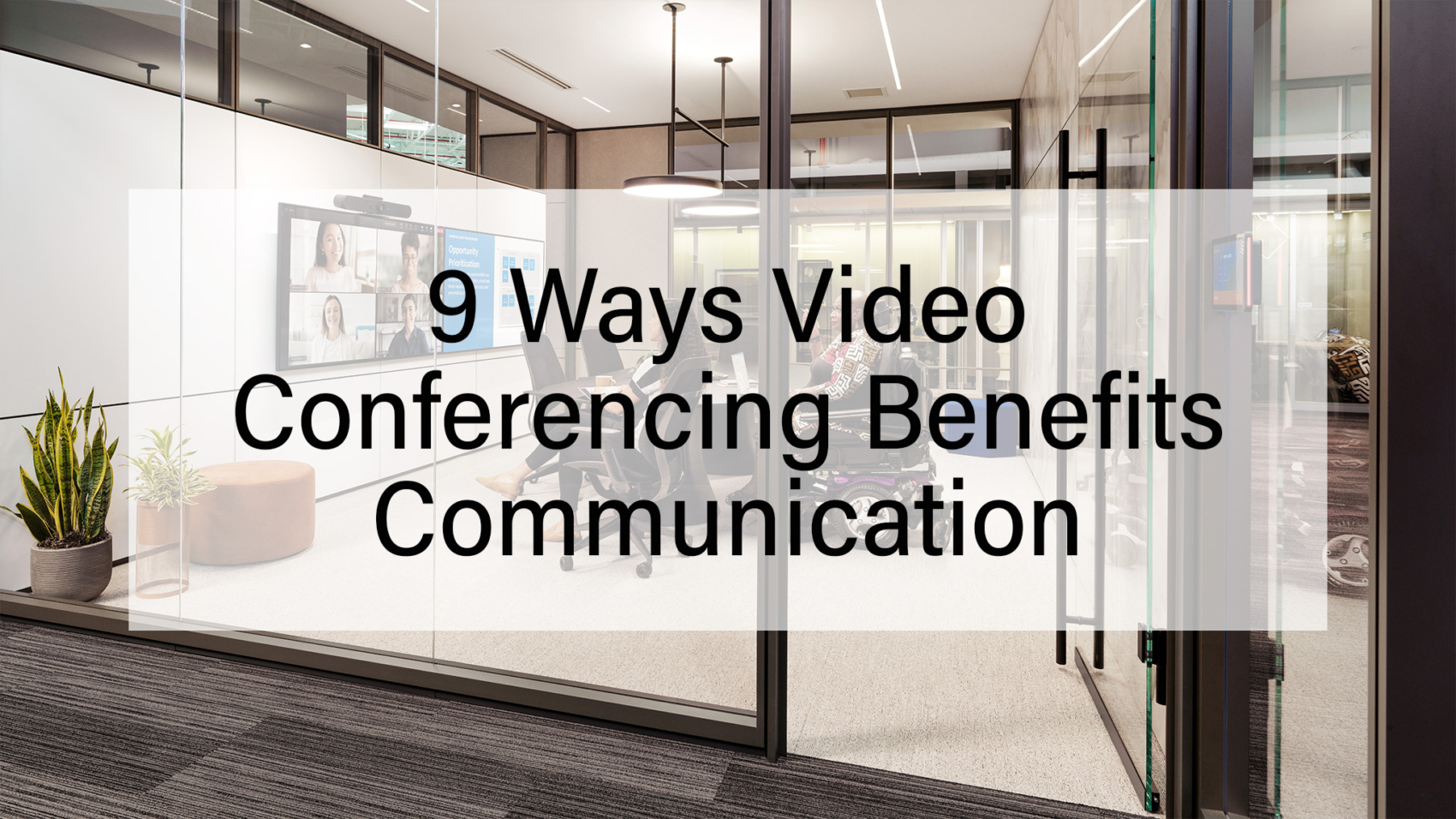What different types of conference rooms are there?
Space and technology have worked together for years to meet an organization’s needs. Technology supports a space just as the space or, more precisely, the furniture integrates with technology. They work in tandem to create amazing spaces where employees can meet, collaborate, and do their best work. Since different organizations have varied needs for their collaboration spaces, there are also different types of conference space options. We will cover four great examples of video conferencing rooms: boardrooms or large conference rooms, huddle rooms, focus rooms, and training rooms.

Boardrooms or Large Conference Rooms
When someone thinks of a conference room, an image of a large table in the middle of a room with big executive chairs often comes to mind. Many movies and shows love to film top executives sitting at the head of the table while staring down their nervous staff. For this reason, the typical boardroom is easily recognizable. However, one large table for twenty-plus people is just one of many ways a large conference room can host meetings.
As furniture and technology have evolved, so have the room functions and designs. Designers are creating more collaborative and relaxed conference rooms as businesses seek to create transparency and discussion between leadership and staff. They are replacing traditional long tables with stadium seating to offer different types of heights and seating postures, as well as couches, lounge chairs, and smaller tables. In many ways, these new designs are transforming traditional corporate conference rooms into what might resemble residential living rooms. The different postures give everyone a choice and make everyone equal, as there is no longer a “head” of the table.
Since these relaxed designs are more dynamic and open to collaboration, the video conferencing technology supporting the room must also be dynamic. It can include multiple displays positioned in the areas of the room where people can easily see them. Camera bars that easily track motion and stitch to different individuals provide another way to bring remote participants in on the action. Read more about these technologies here.

Huddle Rooms
In addition to the large conference room, many businesses opt for smaller spaces for teams to collaborate for 30-60 minutes. The traditional boardroom is in short supply compared to smaller, more agile areas called Huddle Rooms. These meeting spaces typically support 3-6 individuals. Their key characteristics include smaller tables (surrounded by easily maneuverable chairs) butting up against a wall with a single display. There are different types of tables that can be standing height or regular seating height. In the smaller space, an all-in-one solution camera bar can easily share a wide image of all the collaborators with a remote participant. If the camera is mounted at eye level, the remote collaborator will feel like they are also sitting at the table.

Focus Rooms
The next size down in meeting spaces is the focus room. These spaces can vary drastically depending on the organization’s needs. Due to an increased demand for privacy in the workplace, focus rooms were created to support 1-3 individuals. They can look like seated or standing phone booths. Here, employees can take private calls or hold virtual meetings on their laptops. Phone booths give privacy and are easy to move around the office.
Another focus room could be a freestanding meeting pod with glass walls, vented roof, acoustical side panels, and a door. They can also be three hard walls with one glass modular wall and door for extra light. Examples of focus room furniture and technology include:
- A small standing-height table with a single display, control pad, and chair,
- A single desk with a desktop meeting device like a Neat Frame,
- A couple of lounge chairs and a coffee table.
These spaces provide flexible and reservable places for individuals and small teams to escape the noise and dive into their work.

Training Room
The training room is a great multipurpose space with endless layout possibilities. The best areas use easily reconfigurable task tables and chairs with casters. Table layouts can include:
- Large U-shape
- Banquet rows or rounds
- A hollow square
- Cluster tables for collaboration
- Rows facing the front.
With multiple cameras, speakers, and displays mounted on different sides of the room, the space remains dynamic, no matter the configuration.
To learn more, read our blog, “Video Conferencing Examples: Enhancing Communication in the Digital Age”
Getting Started
The furniture and technology options for collaboration spaces are as endless as your imagination. When you need help deciding what technology will work best in your collaboration space, contact OEC. We can help design and install technology that meets your needs and stays within your budget. Contact us today!
Receive our Newsletter
To receive our newsletter, including new editions of spaces and other digital content, fill out the form:

